There was a time when Autodesk was accused of being a one-product company. While AutoCAD was important to the company, and still is to some degree, the past ten years have seen exponential growth in the number of products the company offers, either through acquisition or in-house development.
That is not to say AutoCAD is not important, it’s still a global industry standard and its little brother, AutoCAD LT, still sells by the bucketload. This means that on global launch day, despite having very popular 3D design systems such as Inventor and Revit, AutoCAD and its flavoured version still make headline news. In fact, to describe AutoCAD as a 2D system is disingenuous, as over the past three years substantial 3D capabilities have been added, making AutoCAD a very capable, generic 3D modeller, compatible with Autodesk’s other 3D systems.
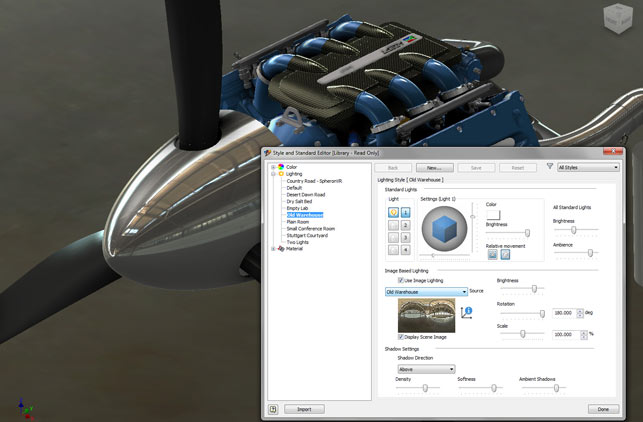
Inventor 2011 features much improved real time lighting control
The primary 2011 product launch was held in downtown San Francisco. Autodesk CEO Carl Bass and senior vice president of platform solutions and emerging business, Amar Hanspal were masters of ceremonies for the event and simultaneous web broadcast. AutoCAD resides in the platform group and so sat central stage, before quick demonstrations of Inventor 2011.
AutoCAD’s new features
The first piece of good news is that DWG is staying the same, so there is no file format hassle with this upgrade. The second piece of news is a tad confusing, as in this release AutoCAD clearly becomes a fully featured 3D modelling tool, offering very powerful surfacing commands for NURBS and procedural surfaces. Last year’s parametric capabilities have been enhanced, such as the ability to infer constraints as well as driving some underlying 3D geometry.
Another great addition has been the inclusion of a powerful point cloud engine, allowing highly accurate laser scans of products or buildings to be brought into the native AutoCAD environment. Typically tools that do this well cost thousands of pounds. This will be useful for reverse engineering, quality inspection and building/road design. Of course the usual array of 2D enhancements to appeal to the core AutoCAD community were also there and, as usual, AutoCAD LT only got the relevant subset of these 2D updates.
Convergence
One of the lesser-known stories behind this batch of releases is the engineering work that has gone on behind the scenes. Autodesk has had two long term objectives. One, to get the products to share data better and two, to standardise the software components. To this aim, the 2011 products represent a significant delivery on longstanding development goals.
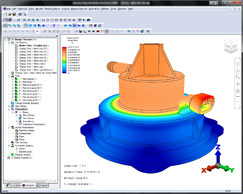
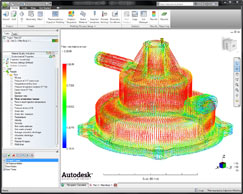
Moldflow is used to discover the flow and orientation of fibres within a glass filled polymer. The data from the previous simulation is then used to determine the structural performance of the parts
Internally know as the AIRMAX initiative (AutoCAD, Inventor, Revit and 3ds MAX), these 2011 products now share the same graphics engine. While this provides a great boost in performance for products such as Revit, the standardisation also means that materials have the same look and feel for predictable results.
The inclusion of a standard material library with each application means that projects will look exactly the same in all products, producing fewer surprises when collaborating or mixing and matching Autodesk applications. This also reduces the development and quality effort for Autodesk’s software teams as the portfolio of products continues to swell. It will also be useful should Autodesk acquire new products in the future.
Subscription
As we all know these are challenging times and in the CAD market every vendor has seen sales drop quite dramatically. That makes Autodesk’s already substantial subscription business all the more important to maintain.
Traditionally Autodesk has never really offered much beyond the next release for the subscription fee but in recent years additional functionality has been delivered mid-cycle across its product range. That appears to be the future direction, where Autodesk will offer more ‘perks’ to subscribing customers. Of course, if you are on subscription it helps to know you have the right to download the goodies. It’s amazing, but it seems many users are not aware of what they could have access to.
Channel changes
Accredited resellers of Autodesk products typically only sell products in vertical markets for which they are authorised and even then not all the products that may be available. So an MCAD reseller may have Inventor accreditation but not be able to sell 3ds Max.
To sell and support products, Autodesk has, in the past, made resellers apply for each and every product. Under new regulations, the resellers can sell all the products from each of its verticals. This means that customers need not have multiple resellers to get their specific product suite.
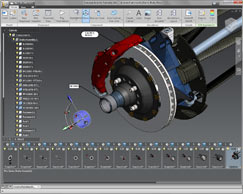
Inventor Publisher offers a range of tools for technical publishing, including the ability to create animated sequences
Manufacturing Solutions
Autodesk’s Manufacturing Solution’s Division is based in Portland, Oregon. To dig deeper into the manufacturing product suite, the company hosted a day of intensive demos for the press, covering everything from Alias-powered conceptual design, through to Inventor modelling, analysis, simulation, publishing and workflow management.
Robert ‘Buzz’ Kross, senior vice president of manufacturing was very upbeat on this particular release, from both a breadth and depth perspective. Inventor not only does what it does well, there are now some really advanced capabilities being delivered by a ‘mid-range’ modelling tool developer.
Autodesk product highlights
Inventor 2011
Inventor 2011 contains one hell of a lot of new functionality which we cover in some depth on page 46, but the highlights range from a dramatically overhauled visualisation engine that offers a pretty photorealistic working environment for 3D, a new frame analysis tool that compliments the existing tools for framework design and a redesigned interface for editing of geometry that places the focus on the model and interaction with the key constituent parts, rather than dialogs and panels.
Inventor Publisher goes live
Previewed on the Autodesk Labs web-site following December’s Autodesk University event, Inventor Publisher is now a standalone application that offers tools for technical publishing. Features include the ability to create animated sequences and step-by-step work instructions.
Alias
This is a product that has been gaining more and more focus in the Autodesk suite. 2011 sees the addition of some core updates that will make life much easier for those already using the system. Good examples include the ability to model across planes of symmetry, which allows the user to ensure a single high quality surface spans that plane.
Previously the user would have to model symmetry spanning surfaces after switching symmetry off – which makes the whole process more efficient. Another is the tools that locate curvature in a surface network. This shows connections between surfaces in terms of position, tangency and curvature continuity and helps users understand how a model is constructed and evaluate areas which need further work to create aesthetically pleasing surfaces.
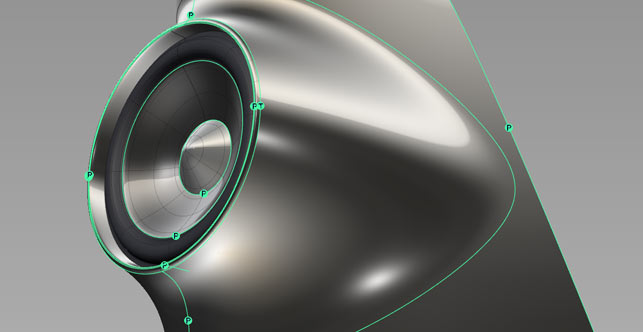
New tools in Alias help users understand how a model is constructed and evaluate areas which need further work to create aesthetically pleasing surfaces
Sketching gets a focus
Alongside all of the geometry creation tools that Alias brings to the party, there’s also been an interesting slew of releases on the sketching side of things. The last year has seen the release of new versions of SketchBook Pro for both the Apple iPhone and iPad, but alongside this there’s a new product called Alias Sketch. Available as a standalone application on Mac or PC and also integrated within AutoCAD, Alias Sketch differs from the bitmap/paint-led approach of SketchBook Pro and allows users to mix both bitmap/paint style sketching with a set of intelligent vector-based sketching tools. The benefit of the vector-based approach is editability and here the system offers a huge range of options and control methods.
Interestingly, Alias Sketch manages to combine mouse and tablet-driven input methods and is possibly one of the most interesting tools to emerge that truly supports the industrial design concept sketching process. Think, Adobe illustrator with all of the irrelevant bits stripped out of it and replaced with a set of efficient, focussed tools. We’ll be taking a look at Alias Sketch in a forthcoming issue in much more depth so stay tuned.
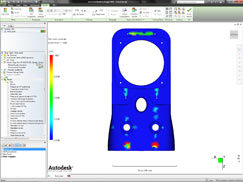

Manufacturing defects are identified in Moldflow and then visualised in Showcase
Simulation and analysis
This is currently a major focus for Autodesk and in the past few years there has been a huge range of tools acquired and merged into both the core Inventor product and those that surround it. With the 2011 releases there have been significant updates to Moldflow and Algor to name but a few, but the most interesting work being done is in terms of interoperability between these disparate systems.
Take the example of how data can now be passed between Moldflow and Algor when simulating how a glass filled polymer is injected into a mould tool. As part of the simulation, Moldflow can pass information about how the glass particles or fibres in the plastic flow in the part.
This data can then be used as the basis for a simulation within Algor to determine the structural strength of the component based on the orientation of the fibres. While this won’t benefit that many people, it’s a good example of how previously disparate technologies and products are converging into interesting solutions.
Another excellent example of this convergence is the link up between Moldflow and Showcase. Moldflow’s raison d’être is to predict the performance of a mould tool set-up with the idea being that manufacturing defects (sink marks, warps etc) can be eliminated either through redesign or adjustment of the manufacturing parameters.
The problem is that all too often these defects are only displayed in cryptic fringe plots and shaded views that mean very little to the non-technical stakeholders in the product development process. To solve this issue, Autodesk has linked up Moldflow to its visualisation system, Showcase, and users can now see exactly what the effects on the final product would be.
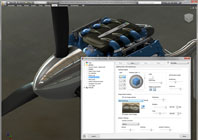
Martyn Day and Al Dean report from the launch events held in San Francisco and Portland






